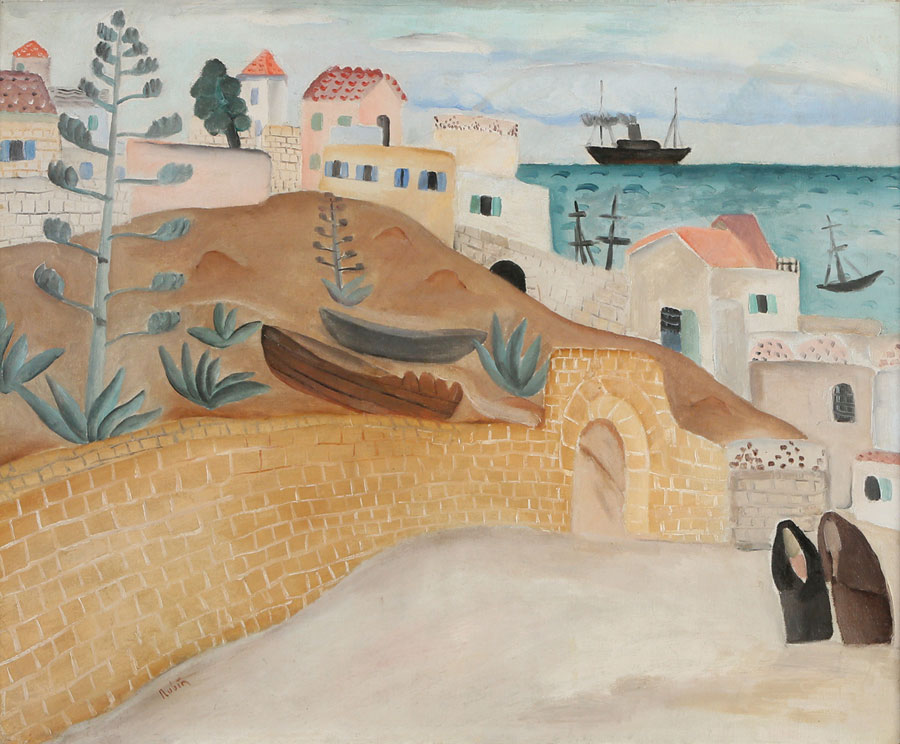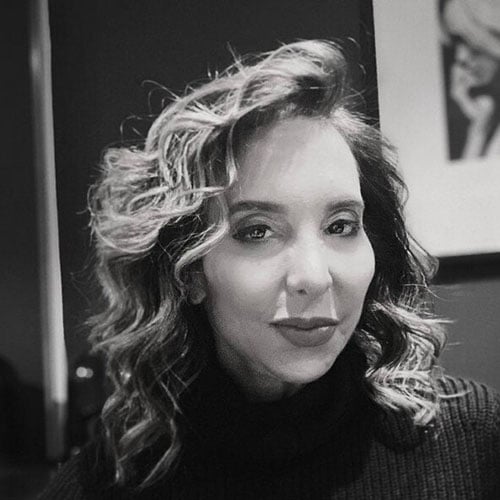 Reuven Rubin’s “Jaffa”
Reuven Rubin’s “Jaffa” Until recently, I didn’t know that there was a major, international auction house in Israel. Art and design are in fact a booming industry in Israel, although little is written about it.
The Tiroche Auction House was founded in 1992 by Jean Tiroche, a Holocaust survivor who established his first art gallery in Tel Aviv in 1957. Over the years, Tiroche has grown to become Israel’s largest auction house with the sale of art collections from such prominent figures as Golda Meir, Abba Eban and the Baron Rothschild. Today, the auction house is run by the founder’s grandson, Amitai Hazan Tiroche.
This year’s annual auction, on Jan. 25, will feature nearly 300 works spanning six decades. Bidders can attend in person, bid by phone or bid online through Trioche’s website.
Tiroche told the Journal that this year’s auction is special for two reasons. First, it includes important international artists such as Marc Chagall, Fernando Botero and Victor Vasarely; previous auctions focused solely on Israeli artists. Chagall’s “Jacob’s Ladder” (1973) is a saga unto itself, as it was stolen and missing for 20 years before being discovered. “The painting depicts one of the most important biblical stories, symbolizing the history of the Jewish people and the land of israel,” Tiroche said.
“The ladder links the Earth with heaven and the angels rise and fall, alluding to the divine prophecy descending upon human beings,” he added. “Chagall chose not to depict the scene in utopian colors, but rather to use dramatic colors according to the painting period of 1973/4, near the difficult time of the Yom Kippur War.”
This year’s auction also is important because of the sale of Reuven Rubin’s “Jaffa” from 1924; only a few works from this period have been auctioned. The work was featured in a landmark exhibition and catalog at the Tel Aviv Museum of Art in 1982 that chronicled works from the 1920s.
In 1926, Israeli poet Haim Nahman Bialik wrote that the Israel portrayed in Rubin’s paintings was a “Midrash Agada, a moral reinterpretation of Jewish tradition and identity.”
“The artists portrayed the Mediterranean light in an almost spiritual manner.”
— Amitai Tiroche
“The 1920s are considered the golden age of Israeli art,” Tiroche said. “The paintings of the young nation’s artists reflect the formation of Hebrew and Zionist culture in Israel upon the foundations of the Jewish past, using symbolism and utopian colors. The artists portrayed the Mediterranean light in an almost spiritual manner, as a sign of merging with nature and a new awakening.
“The combination of beauty and romance in the art of these years, combined with the rarity of the artworks preserved from this period, have made the paintings of these years the aspiration of every collector of Israeli and Jewish art.”
Looking at the images of works being auctioned, especially “Jaffa” and Yohanan Simon’s “Figures in the Kibbutz” (1940s), I am again struck not just by the dreamy sensuality, brilliant use of line and color, and an often erotic mysticism in the works, but by the sad fact that so few outside of Israel are even aware of their existence.
Israeli artists seem to understand that deep spiritual beauty can create bonds between disparate cultures; that it can inspire the best within each of us. Can beauty save the world? as the Russian writer Fyodor Dostoyevsky suggested. I decided to find out by starting the first magazine devoted to innovative Israeli art and design. The tagline: the light we create.
Karen Lehrman Bloch is the editor-in-chief of yofi magazine.























 More news and opinions than at a Shabbat dinner, right in your inbox.
More news and opinions than at a Shabbat dinner, right in your inbox.